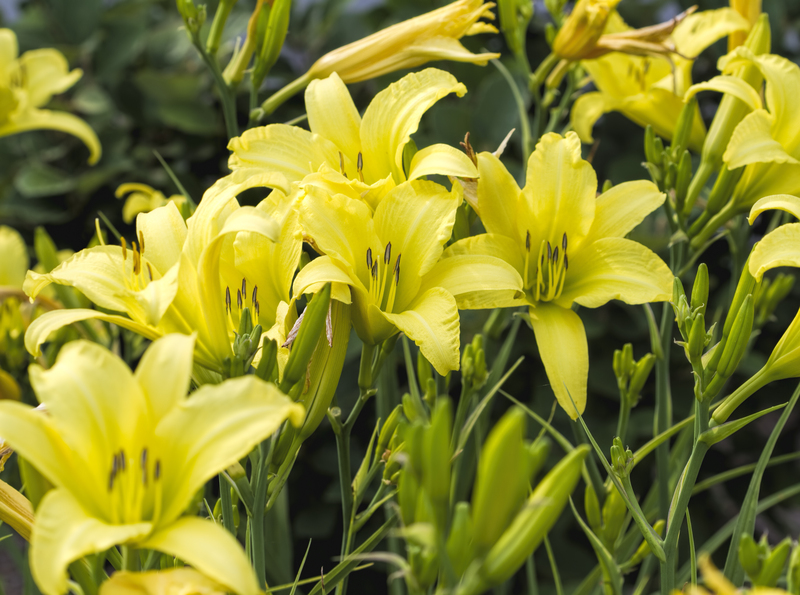Spring Garden Planning Essentials
Posted on 29/09/2024
Spring is a time of renewal and growth, and for gardeners, it marks the beginning of a new season of blooming flowers, fresh vegetables, and vibrant landscapes. Whether you're a seasoned gardener or a novice, planning your spring garden is crucial to ensuring its success. This article will guide you through the essentials of spring garden planning, from selecting the right plants to preparing your soil and maintaining your garden. Let's get started!
Choosing the Right Plants
The first step in planning a successful spring garden is selecting the right plants. Consider the following factors when choosing plants for your garden:

Climate and Hardiness Zone
One of the most critical factors in plant selection is your region's climate and hardiness zone. The USDA Plant Hardiness Zone Map divides North America into 13 zones based on the average annual minimum winter temperature. Knowing your zone will help you choose plants that can thrive in your climate. For instance, if you live in Zone 5, you'll want to avoid plants that are only hardy to Zone 7 or 8.
Soil Type and Quality
Understanding your soil type is essential for plant selection. Soil can be sandy, loamy, clayey, or a combination of these. Each type has different drainage, nutrient retention, and aeration properties. Conduct a soil test to determine its pH and nutrient levels, allowing you to select plants that can thrive in your specific soil conditions.
Sunlight and Shade
Assess the amount of sunlight your garden receives throughout the day. Some plants require full sun (at least 6 hours of direct sunlight), while others thrive in partial shade or full shade. Group plants with similar light requirements to ensure they receive the proper amount of sunlight for optimal growth.
Designing Your Garden Layout
Once you've chosen your plants, it's time to design your garden layout. Proper planning will ensure your garden is aesthetically pleasing and functional. Consider the following tips when designing your garden:
Creating a Focal Point
A garden focal point draws the eye and adds visual interest. This could be a striking plant, a garden statue, a water feature, or an arbor. Place your focal point in a prominent location, such as the center of a garden bed or at the end of a pathway.
Grouping Plants by Height
Arrange your plants by height to create a sense of depth and structure. Place taller plants at the back of garden beds, mid-sized plants in the middle, and shorter plants at the front. This arrangement ensures all plants receive adequate sunlight and are easily visible.
Incorporating Paths and Walkways
Paths and walkways provide access to different areas of your garden and prevent soil compaction from foot traffic. Use materials such as gravel, mulch, stepping stones, or brick to create attractive and functional pathways. Ensure paths are wide enough for easy movement and consider adding seating areas for relaxation.
Preparing Your Soil
Good soil preparation is the foundation of a healthy garden. Follow these steps to prepare your soil for spring planting:
Clearing Debris and Weeds
Start by clearing your garden beds of any debris, such as fallen leaves, twigs, and dead plants. Remove any weeds, as they compete with your plants for nutrients and water. Use a garden fork or hoe to loosen the soil and remove root systems thoroughly.
Testing and Amending Soil
Conduct a soil test to determine the pH and nutrient levels of your soil. Most plants prefer a pH between 6.0 and 7.0. If your soil is too acidic (pH below 6.0), add lime to raise the pH. If it's too alkaline (pH above 7.0), add sulfur to lower the pH. Incorporate organic matter, such as compost or aged manure, to improve soil structure, fertility, and drainage.
Adding Mulch
Mulch helps retain soil moisture, suppress weeds, and regulate soil temperature. Apply a 2- to 3-inch layer of organic mulch, such as shredded bark, straw, or compost, around your plants. Keep the mulch a few inches away from plant stems to prevent rot.
Planting Your Garden
With your soil prepared, it's time to start planting. Follow these tips for successful planting:
Timing Your Planting
Timing is crucial for successful planting. Check the frost dates for your region to determine when it's safe to plant. Generally, it's best to wait until after the last frost to plant most annuals and warm-season vegetables. Perennials and cool-season crops can often be planted earlier.
Spacing Your Plants
Proper spacing is essential for healthy plant growth. Crowded plants compete for nutrients, water, and sunlight, leading to poor performance and increased disease risk. Follow the recommended spacing guidelines for each plant species to ensure adequate airflow and room for growth.
Watering and Fertilizing
Water your plants thoroughly after planting to help them establish their root systems. Continue to water regularly, especially during dry periods. Fertilize your plants according to their specific needs, using a balanced, slow-release fertilizer. Avoid over-fertilizing, as this can lead to excessive foliage growth and reduced flower or fruit production.
Maintaining Your Spring Garden
Proper maintenance is essential to keep your garden healthy and thriving throughout the spring season. Implement the following practices:
Regular Weeding
Weeds compete with your plants for nutrients, water, and sunlight. Regularly inspect your garden and remove any weeds promptly. Use mulch to suppress weed growth and make weeding easier.
Pruning and Deadheading
Pruning helps maintain the shape and health of your plants. Remove any dead, damaged, or diseased branches to promote new growth and prevent the spread of diseases. Deadheading, or removing spent flowers, encourages continuous blooming and prevents plants from going to seed.
Pest and Disease Management
Monitor your garden regularly for signs of pests and diseases. Use organic or chemical treatments as needed to control infestations. Encourage beneficial insects, such as ladybugs and predatory wasps, to help manage pest populations naturally.

Supporting Your Plants
Some plants, such as tomatoes and climbing beans, require support to grow properly. Use stakes, cages, or trellises to provide the necessary support and prevent plants from sprawling on the ground.
Conclusion
Planning and maintaining a successful spring garden requires careful consideration of plant selection, garden layout, soil preparation, planting techniques, and ongoing maintenance. By following these essential tips, you'll create a beautiful and thriving garden that brings joy and satisfaction throughout the spring season and beyond. Happy gardening!












